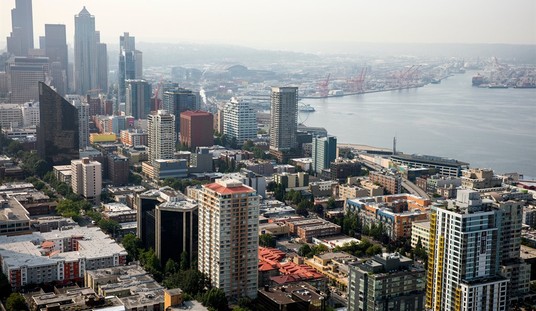As we recently discussed, the arrival of the first shipments of vaccines isn’t going to suddenly bring life back to “normal” in America, at least based on the government’s most recent statements and projections. (Or whatever passes for normal these days, anyway.) Even the people who are first in line for the shots will need a second dose several weeks later, with more time needed for their immune systems to reach “full strength.” Based on most of the rollout plans we’ve been hearing, healthy young people and children will be near the bottom of the priority list, so that means that the vast majority of students in the United States aren’t going to be getting vaccinated until May or June of 2021. In other words, after the current school year is over.
So what happens to the class of 2021 and all of the younger kids who are making their way through junior high and high school? I highly doubt the teachers’ unions are suddenly going to start becoming fans of going back to work. And that means that the majority of kids will still be stuck with “distance learning.” As this report from the Boston Globe informs us, remote education simply isn’t working and there are a variety of reasons for that. The end result, however, is that the number of kids receiving failing grades is rising significantly and an alarming number of students never even log in for online classes on any given day.
Nearly a quarter of Boston public high school students did not log into classes on any given day this fall as schools remain closed and course failure rates rise, according to school data released Saturday that paints a worrisome picture of academic disengagement.
Among students in grades 6-12, failure rates for the first academic quarter, which concluded last month, jumped to 18 percent in English, from 12.4 percent the previous year. Increases in failure rates in other subjects were similar.
Black and Latino students experienced the biggest increases.
One of the starkest numbers being reported is the fact that only 54% of high school seniors in the greater Boston area enrolled in college this fall. That’s a very significant drop from the average over the past decade. And this phenomenon isn’t unique to Boston. We’re seeing it all over the country.
The underlying reality is something that was probably obvious to most of us from the beginning of this fiasco. There are a small number of gifted, highly intelligent and self-motivated children in this country who are doing fine in their schoolwork. They tend to come from families with plenty of online and computer savvy to begin with and they know their way around the online educational system. They also tend to come from families with enough disposable income for the children to have their own, good-quality laptops and high-speed internet access in their homes.
But as I said, that description really only applies to a relatively small percentage of students. Lots of kids simply aren’t as self-motivated and they need a bit of a push from responsible adults to get them to crack the books (be they paper or virtual) and apply themselves. Too many come from families where the parents aren’t experienced with computers and the online environment, so if they can’t figure it out for themselves, they don’t have much support in navigating the maze of the educational web. Some may not even have a computer in their home at all.
With all that in mind, the fact that “only” a quarter of Boston’s students failed to even log in on any given day could be seen as rather remarkable. But even for those who do manage to access the system, failure rates are still far above what we normally see. In other words, this system is not functional for most of the families in the country.
So what’s the alternative? The answer seems clear and it should have been obvious for a while now. Open the schools. Give the teachers all of the PPE they need to make them comfortable standing in front of a class and encourage the kids to wear masks if that makes everyone feel safer. Let’s keep in mind that a grand total of 96 children aged 1 through 14 have died of COVID thus far in a nation of roughly 350 million people. And several dozen of those were cases where the illness was complicated by pneumonia or other ailments and preexisting conditions. Yes, every death of a child is a tragedy. Full stop. But we lose more children than that to many other causes each and every year.
We’re losing an entire graduating class to the shutdowns imposed on the schools and all of the students coming up behind them are significantly behind in their progress. It’s going to take a long time to recover from this, even if we assume that everyone will be vaccinated and the schools will reopen normally in the autumn of 2021. But from the chatter we’re hearing coming out of the teachers’ unions and the government, they’re still in no hurry to get the kids back into class.








